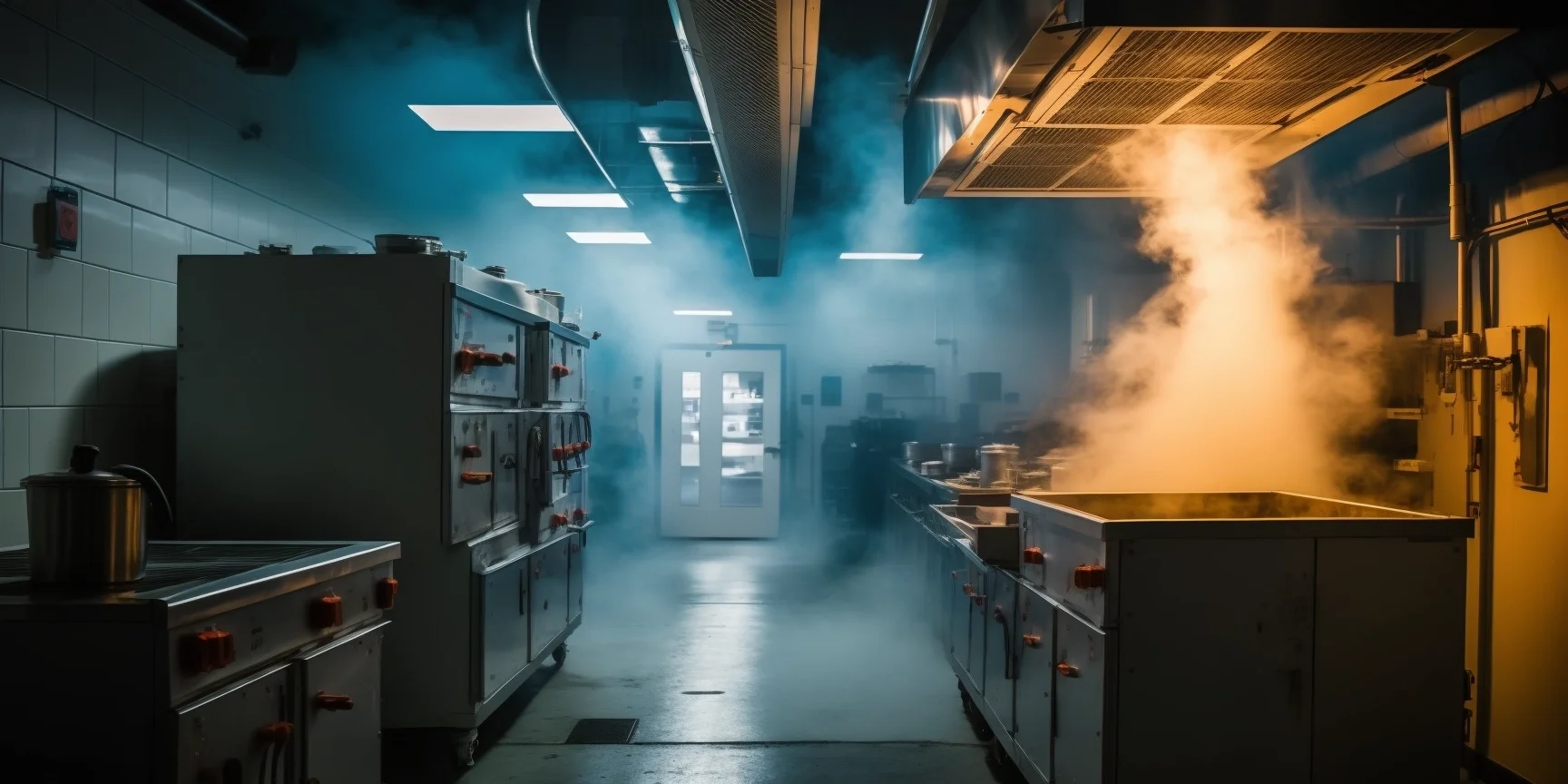What are Fire Detection And Suppression Systems?
Fire Detection and Suppression Systems (FDSS) are system of components designed to detect, alert, and suppress fires in a timely manner to limit property damage and ensure occupant safety. Fire detection systems use specialized sensors to detect smoke or heat generated by a fire before it spreads. Once detected, an alarm is sounded to alert occupants of the building to evacuate and notify fire fighters. Fire suppression systems include sprinkler systems which activate when certain levels of heat or smoke are detected in order to quickly suppress the fire. Other suppression agents such as foam, dry powder, wet chemicals, or inert gases can be used depending on the structure type and situation.
FDSS not only provide early warning of fires but also reduce the spread of flames by initiating quick suppression. The presence of FDSS can also improve occupant confidence in the safety of their environment, enabling them to remain productive while feeling secure. Additionally, it has been found that properly designed FDSS have contributed to significantly reduced property damage costs due potential fires.
The National Fire Protection Association (NFPA) provides standards for proper design and installation of FDSS in buildings across all industries; these standards should always be adhered to when designing any system. In addition, the NFPA provides guidelines for regular testing and maintenance schedules for all installed FDSS systems so as they remain functional at all times. By following these guidelines, FDSS systems can provide an effective first line-of-defense against fire with minimal risk of false alarms or downtime.
What types of businesses require Fire Detection And Suppression Systems?
Businesses that work with potentially hazardous materials, such as those related to chemicals, petrochemicals, oil and gas, or food production require fire detection and suppression systems. These specialized fire safety systems are designed to protect people, property and processes by detecting fires quickly and suppressing them before they cause too much damage. Examples of businesses that may need fire detection and suppression systems include manufacturing facilities, warehouses, storage facilities, restaurants, hotels, hospitals and educational institutions.
Businesses that handle large amounts of combustible material – like woodworking or metalworking shops – also need fire detection and suppression systems. These can help protect workers from the risk of serious injury or even death due to a sudden spark or open flame. Similarly, businesses with hazardous electrical equipment may require fire protection systems to guard against the risk of an arc flash caused by an electrical malfunction.
Additionally, buildings in which large numbers of people congregate – like churches or auditoriums – should have fire safety devices in place to maintain a safe environment for occupants in case of a rapid-spreading fire. Businesses like these should look for modern detection systems that can detect smoke and heat faster than ever before along with automatic suppression features that will deploy rapidly if needed.
Examples of Fire Detection And Suppression System Components
1. Fire Alarm System: A fire alarm system is an integrated network of devices installed in a building to detect the presence of smoke or heat and notify occupants so that they can evacuate safely and quickly.
2. Smoke Detectors: Smoke detectors are battery-powered sensors designed to activate alarms when smoke enters their field of view, alerting everyone to the potential danger of fire before it spreads out of control.
3. Heat Detectors: Heat detectors are specialized sensors designed to detect thermal energy generated by fires, triggering an alarm whenever temperatures exceeding pre-determined thresholds are detected within its vicinity.
4. Sprinkler Systems: Sprinkler systems consist of pipes connected to water sources containing sprinklers strategically placed above areas where fires may start, releasing large amounts of water onto flames as soon as they erupt, helping suppress them before they spread further into other parts of the building or cause significant damage overall.
5. Fire Extinguishers: Fire extinguishers come in various forms but all contain pressurized liquids which can be deployed manually on small fires up close for quick containment without having to wait for automated systems such as sprinklers and alarms being activated or professional help arriving from outside sources.
6. Emergency Lights: Emergency lights are designed to activate automatically during a power outage, providing visual pathways for occupants to evacuate and make their way out of the building safely. They also provide a source of illumination in areas where fire alarms may be disoriented or unable to function properly due to the intensity of the flames and smoke released by fires.
Who to consult on Fire Detection And Suppression Systems?
When it comes to Fire Detection and Suppression Systems, businesses should consult a Certified Fire Protection Specialist or a fire safety engineer. These professionals can provide advice on the type of system needed, its installation, and the maintenance and testing required to ensure it meets certain criteria. They will also be familiar with the local building codes and any additional regulations that may apply.
A Certified Fire Protection Specialist is specially trained in all areas of fire detection and suppression systems, including design, installation, operation, maintenance, inspection, testing and repair of these components. They will have knowledge of the applicable laws and regulations as well as the ability to develop solutions that meet specific needs based on objectives or requirements. It is important to note that they are not firefighters but rather experts who can evaluate existing systems or create customized ones for new projects.
Fire Safety Engineers specialize in designing buildings to reduce risk for occupants in case of fire emergencies. They assess potential threats and determine appropriate measures to reduce these risks – be it smoke detectors, sprinkler systems or other passive fire protection systems such as fire-retardant doors and windows. Additionally they will review drawings for new construction projects to ensure plans comply with local regulations before issuing permits for occupancy.
Businesses should take care when selecting a professional for their Fire Detection And Suppression System needs; certified experts should possess credentials from reputable organizations such as the National Fire Protection Association (NFPA), Underwriters Laboratories (UL), Factory Mutual (FM) Global or American Society of Heating Refrigeration Air-Conditioning Engineers (ASHRAE).
What is the most cot-effective way to acquire a Fire Detection And Suppression System?
One of the most cost-effective ways to acquire a Fire Detection and Suppression System is to look at existing systems that have already been installed and are operating in similar situations. This is often done through research and comparison shopping. Additionally, one can also explore leasing or renting options which can help keep upfront costs low while providing access to modern fire protection systems with regularly scheduled maintenance.
In some cases, companies may be able to qualify for financial incentives if they switch from an outdated system to a newer model, as this will often increase the safety and reliability of the facility’s fire detection and suppression capabilities. The best option would be to speak with knowledgeable vendors who can provide information on potential cost savings associated with various models.
When shopping around for a Fire Detection and Suppression System, it’s important to consider the size of the facility or building along with its specific fire hazards. This will help determine which type of system should be installed as well as how much it may cost. Other factors such as labor costs and installation time should also be taken into account when researching different models or providers.
Ultimately, acquiring a Fire Detection and Suppression System doesn’t have to break the bank if done correctly. By doing research ahead of time, staying informed on technological advancements in fire protection equipment, taking advantage of financial incentives when possible, and consulting with experienced vendors, anyone can obtain a reliable system at an affordable price point.
How can software solutions support Fire Detection And Suppression System?
Software solutions can play a crucial role in supporting Fire Detection And Suppression Systems (FDASS). By providing a platform for gathering information, analyzing data, and predicting potential scenarios, software solutions can give fire safety professionals the tools they need to protect personnel, property, and the environment.
First, software solutions can be used to monitor environmental factors that may indicate an increased risk of fire. For example, sensors placed in key locations around a facility or building can detect changes in smoke density or thermal heat levels, providing early warnings of potential fires. Additionally, software solutions can provide real-time updates on weather conditions or other risk factors that could result in an increased chance of fire.
Software solutions also offer additional benefits such as improved accuracy and efficiency when responding to fires. For instance, FDASS systems equipped with facial recognition technology allow firefighters to quickly identify personnel who are at risk inside a burning structure. Moreover, integrated navigation systems enable firefighters to more safely and efficiently navigate their way through complex buildings during rescue operations.
Finally, analytics derived from software solutions can help fire safety professionals better understand where to deploy resources most effectively. This includes identifying areas that are more prone to fires and understanding both current and future trends in their industry. All these insights can lead to more effective strategies for prevention as well as help mitigate the impact of fires once they occur.




